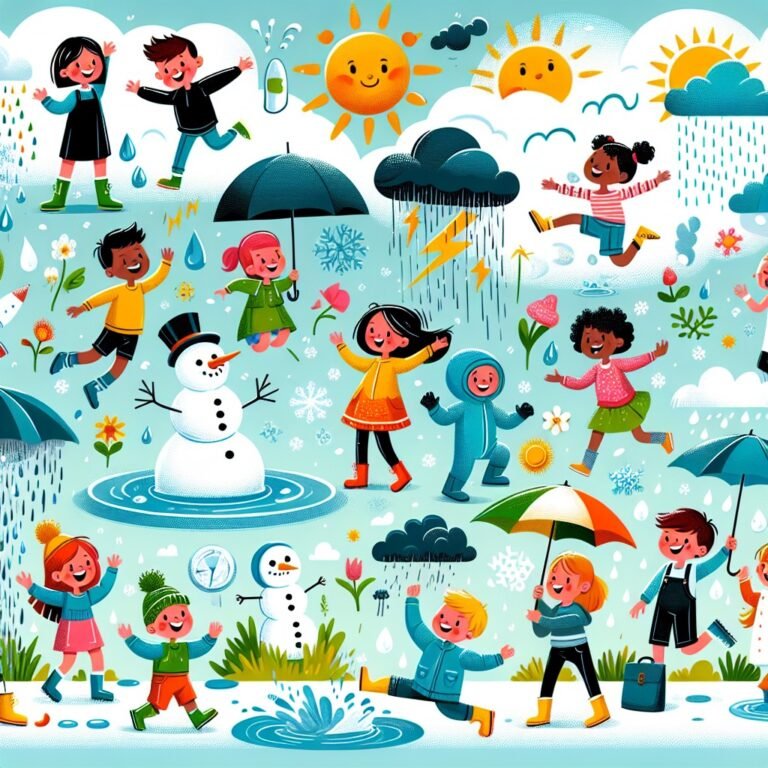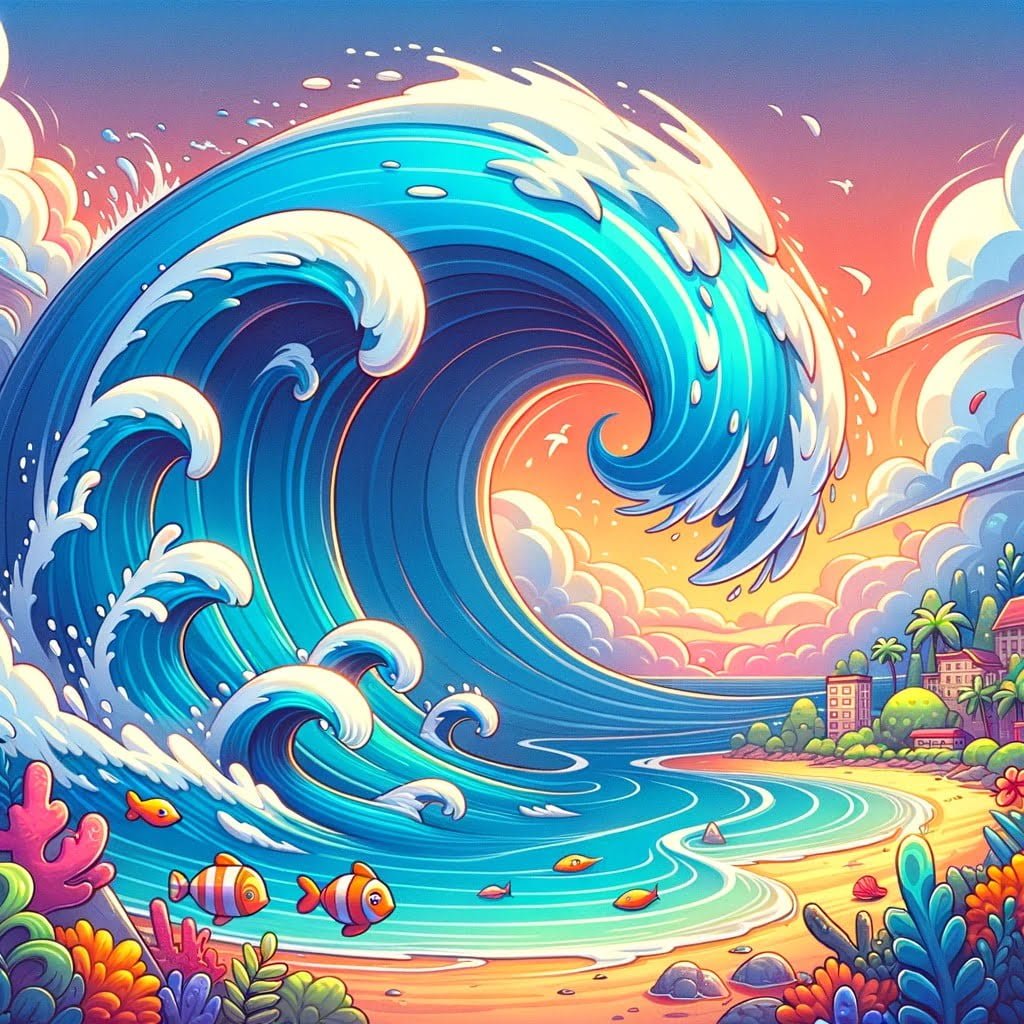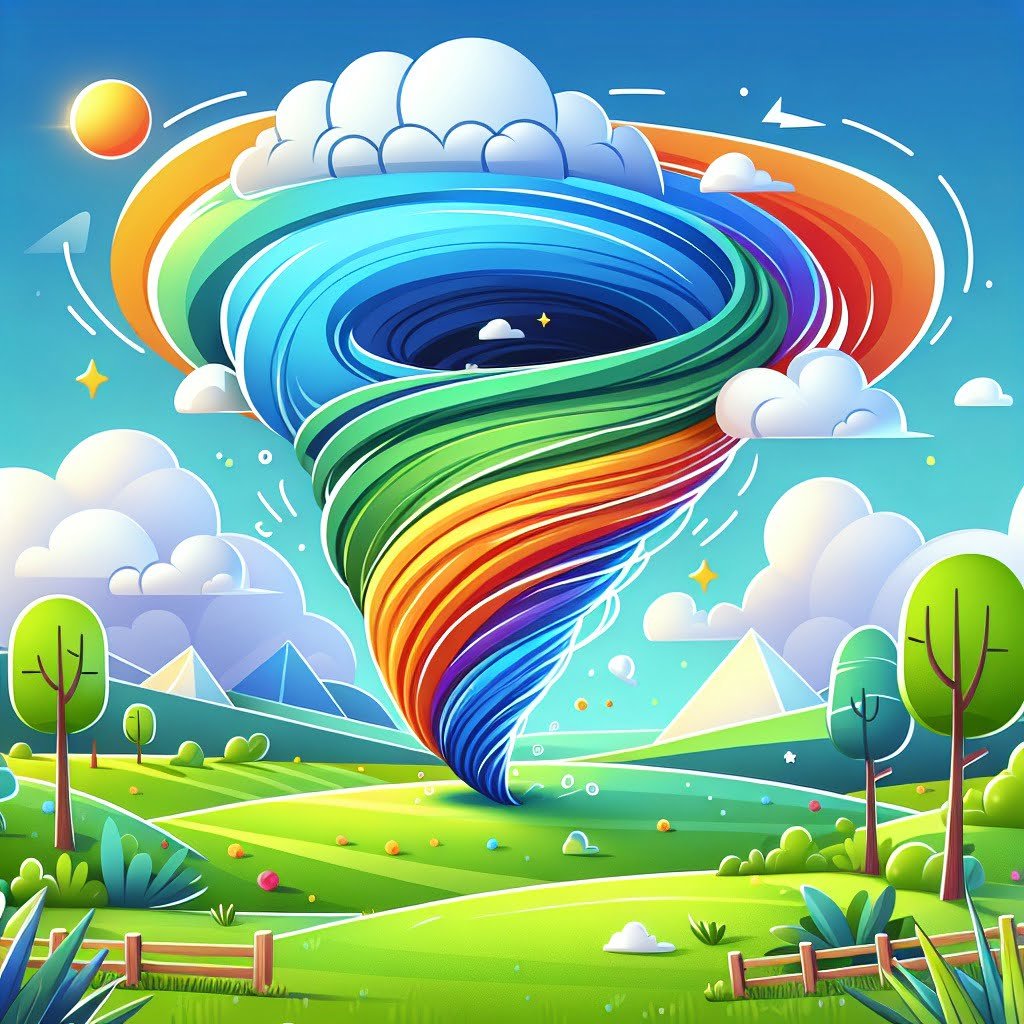Welcome to our blog post filled with fascinating **Facts About Climate For Kids**! Climate change is a pressing issue that affects all living beings on Earth, and it’s crucial for children to understand the facts about climate in order to become informed global citizens. In this post, we will explore fun and engaging facts about climate change specifically tailored for kids, covering topics such as the rising Earth’s temperature, the impact on wildlife migration, the importance of the ozone layer, the melting of glaciers, and much more. By educating children about these important concepts, we can inspire the next generation to take action and make a positive impact on the planet for future generations. Join us on this educational journey as we delve into the complexities of climate change and explore ways in which kids can become proactive stewards of the environment. Let’s empower our children to be champions for the Earth and work towards a sustainable future together!
Facts About Climate For Kids
1. The Earth’s Temperature is Rising
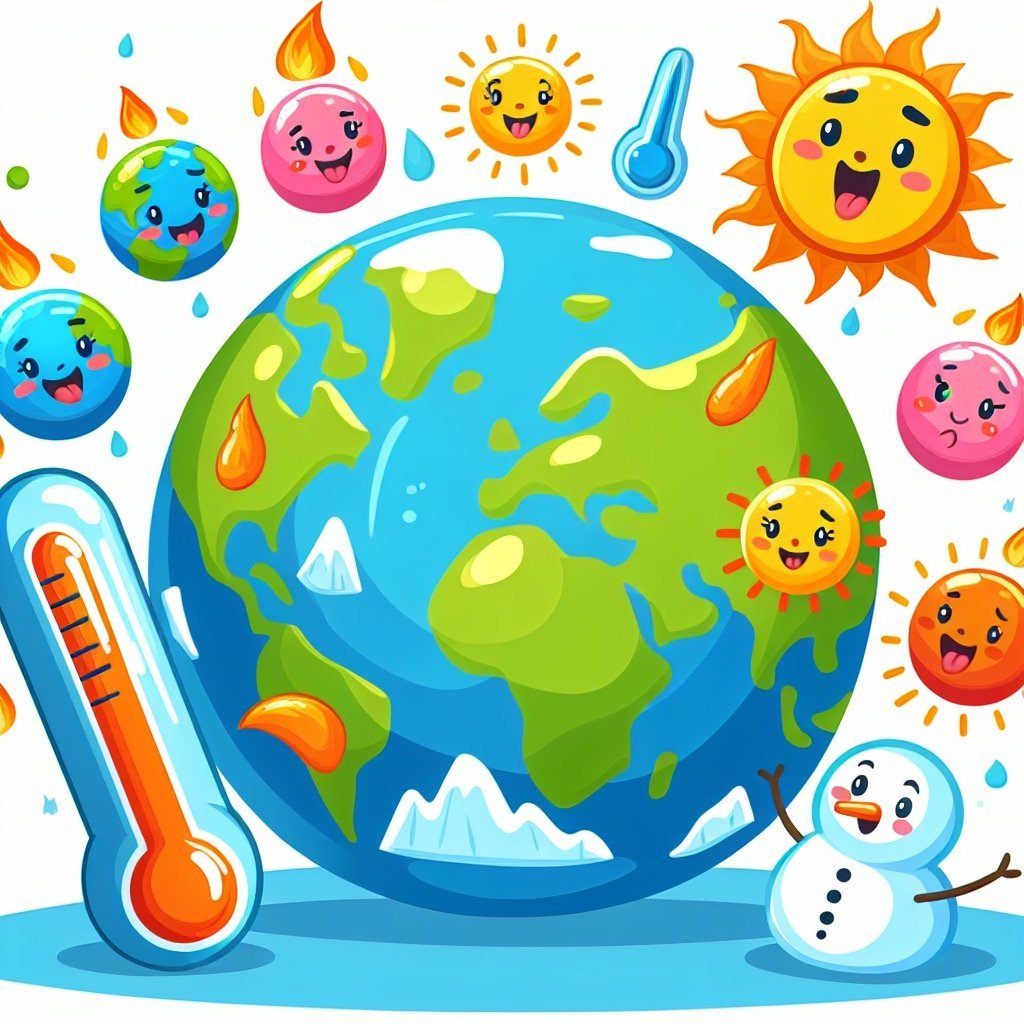
For younger kids: The Earth is getting hotter and it’s affecting our weather.
For older kids: The Earth’s temperature has been steadily increasing, leading to changes in weather patterns, more severe storms, and melting ice caps.
Detailed explanation:As an expert in climate science and a writer of popular science blogs, I am here to explain the alarming fact that the Earth’s temperature is rising. This phenomenon, known as global warming, is a result of the increased concentration of greenhouse gases in the atmosphere. These gases, such as carbon dioxide and methane, trap heat from the sun and prevent it from escaping back into space, leading to a gradual warming of the planet.
There are several key factors contributing to the rise in Earth’s temperature. One major factor is the burning of fossil fuels for energy, transportation, and industrial processes. This releases large amounts of CO2 into the atmosphere, which accumulates over time and contributes to the greenhouse effect. Deforestation is another significant factor, as trees absorb CO2 and help regulate the Earth’s climate. When forests are cleared, this results in a loss of this natural carbon sink.
The consequences of rising temperatures are widespread and far-reaching. Melting ice caps and glaciers contribute to rising sea levels, threatening coastal communities and ecosystems. Extreme weather events, such as hurricanes, droughts, and heatwaves, are becoming more frequent and severe. Changes in precipitation patterns are impacting agriculture and water resources, leading to food and water shortages in some regions.
It is crucial for everyone, including kids, to understand these Facts About Climate For Kids and take action to address climate change. This includes reducing our carbon footprint by using renewable energy sources, supporting policies to limit greenhouse gas emissions, and advocating for sustainable practices in our communities. By working together to mitigate the impacts of climate change, we can help ensure a healthier and more sustainable future for generations to come.
Facts About Climate For Kids
2. Polar Bears are Losing Their Homes

For younger kids: Polar bears need ice to live, and it’s disappearing.
For older kids: Due to global warming, polar ice caps are melting, leading to a loss of habitat for polar bears and other arctic animals.
Detailed explanation:Polar bears are losing their homes due to the impacts of climate change. As global temperatures rise, the polar ice caps are melting at an alarming rate, leading to a loss of the sea ice that polar bears depend on for hunting seals, their main food source. Without these ice platforms, polar bears are forced to swim longer distances in search of food, leading to exhaustion and decreased reproductive success.
One of the key facts about climate change for kids to understand is that the loss of sea ice not only affects polar bears, but also has a ripple effect on the entire Arctic ecosystem. As top predators, polar bears play a crucial role in maintaining the balance of their environment. When their populations decline due to habitat loss, it can have cascading effects on the populations of their prey species, as well as on other animals that depend on the Arctic ecosystem for survival.
It is important for children to be aware of the impacts of climate change on polar bears and other species, as well as the role that human activities, such as the burning of fossil fuels and deforestation, play in driving these changes. By learning about these facts about climate for kids at a young age, they can develop a greater understanding of the importance of taking action to mitigate the effects of climate change and protect the habitats of vulnerable species like the polar bear.
Facts About Climate For Kids
3. Climate Change Affects Wildlife Migration
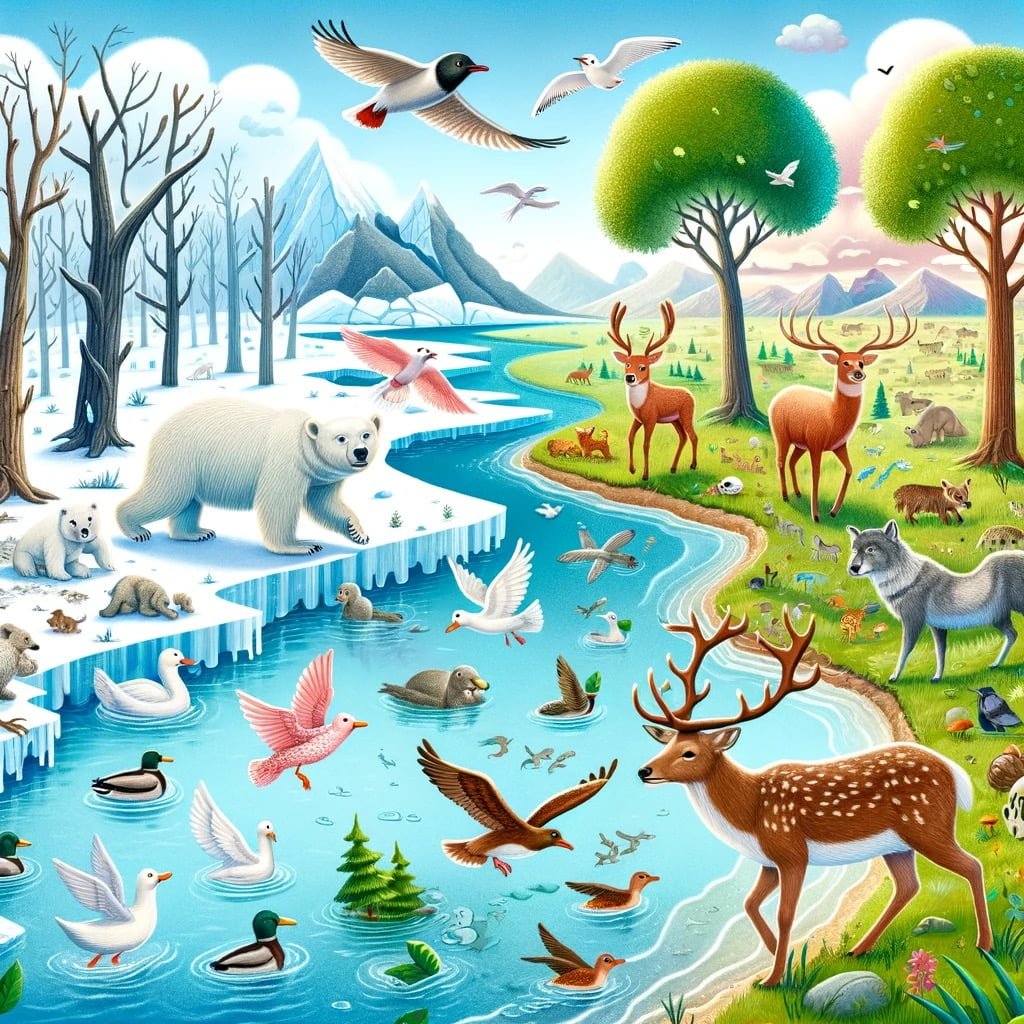
For younger kids: Animals have to find new places to live because of the changing weather.
For older kids: Climate change is disrupting the migration patterns of many animals, forcing them to find new habitats and food sources.
Detailed explanation:Climate change is a pressing issue that is impacting ecosystems and wildlife worldwide. One of the most significant ways in which climate change affects wildlife is through disruptions in migration patterns. Many species of animals rely on specific climatic conditions to migrate between breeding and feeding grounds. However, as global temperatures rise and weather patterns become more unpredictable, these traditional migration routes are being altered.
For example, migratory birds may arrive at their breeding grounds to find that the timing of insect hatches or plant blooms no longer aligns with their arrival, leading to food shortages and decreased reproductive success. Similarly, marine animals such as sea turtles may struggle to find suitable nesting sites on beaches that have been eroded due to rising sea levels.
These disruptions in migration patterns can have cascading effects on entire ecosystems. For instance, if pollinators like bees and butterflies fail to migrate to their usual habitats, plant species may not be able to reproduce effectively, leading to a decline in food sources for other animals. Additionally, predators that rely on migratory prey for sustenance may also face food shortages, impacting their populations as well.
It is crucial for kids to understand the facts about climate change and how it affects wildlife migration in order to appreciate the interconnectedness of ecosystems and the importance of preserving biodiversity. By taking action to reduce greenhouse gas emissions, conserve natural habitats, and support wildlife conservation efforts, we can help mitigate the negative effects of climate change on migratory species and promote a healthier planet for future generations.
Facts About Climate For Kids
4. The Ozone Layer Protects Us from the Sun
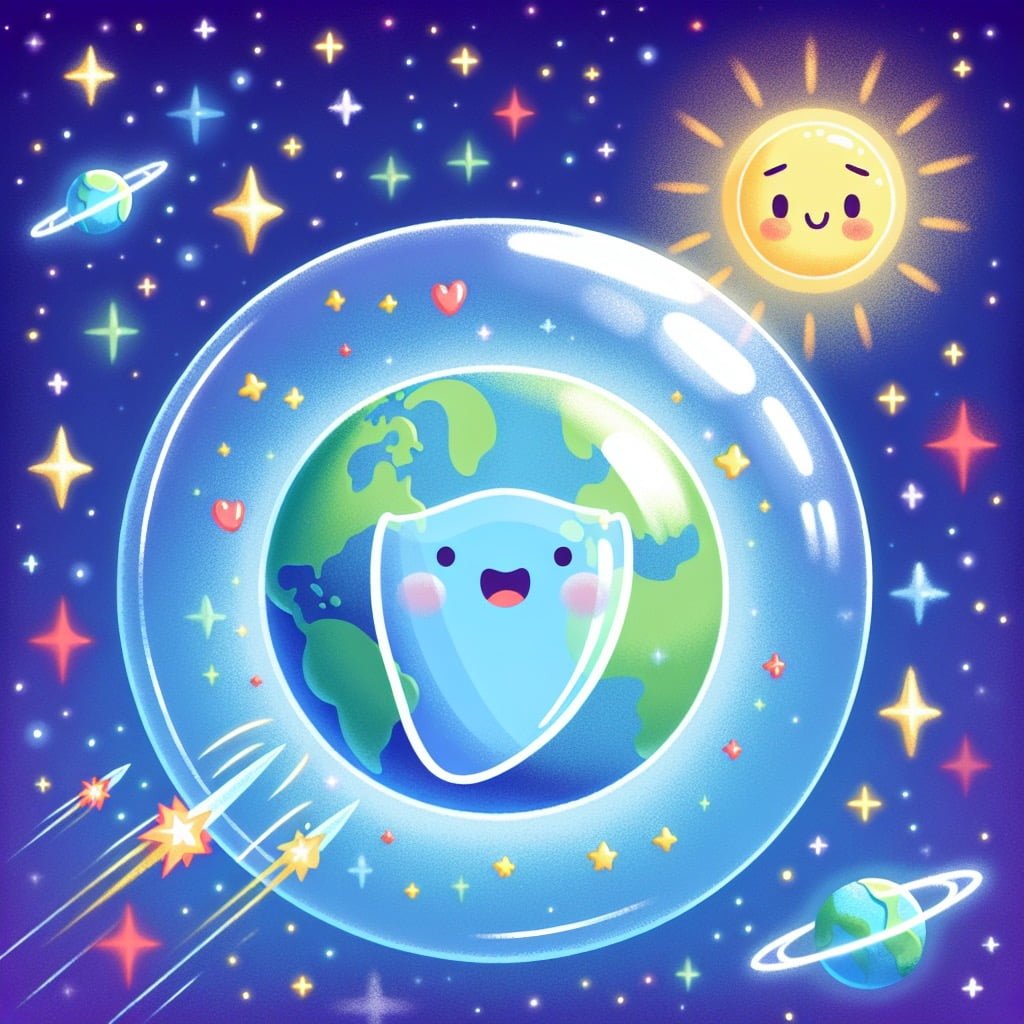
For younger kids: The ozone layer acts like sunscreen for the Earth.
For older kids: The ozone layer shields the Earth from harmful ultraviolet radiation, which can cause skin cancer and harm the environment.
Detailed explanation:The ozone layer is a vital component of Earth’s atmosphere that plays a crucial role in protecting us from the harmful effects of the sun’s ultraviolet (UV) radiation. This thin layer of gas is situated in the stratosphere, around 15 to 30 kilometers above the Earth’s surface. It acts as a shield, absorbing the majority of the sun’s harmful UV rays, particularly those in the wavelengths known as UVB and UVC.
Kids should understand that the ozone layer serves as a protective barrier, filtering out harmful UV radiation before it reaches the Earth’s surface. Without this protective layer, excessive exposure to UV radiation can lead to a range of health issues, including skin cancer, cataracts, and weakened immune systems.
It is important for kids to be aware of the role of the ozone layer in safeguarding our health and the environment. Human activities, such as the release of certain chemicals like chlorofluorocarbons (CFCs) used in refrigerants and aerosols, have been largely responsible for the depletion of the ozone layer. As a result, international efforts have been made to phase out the use of these harmful substances through agreements like the Montreal Protocol.
Educating kids about facts about climate change and the ozone layer can empower them to make informed choices about protecting the environment and contributing to global efforts in combating climate change. By understanding the importance of the ozone layer, kids can appreciate the need for sustainable practices that help preserve this essential shield for future generations.
Facts About Climate For Kids
5. Melting Glaciers Contribute to Rising Sea Levels

For younger kids: Glacier ice is melting and making the sea levels rise.
For older kids: The melting of glaciers is a major contributor to rising sea levels, which can lead to coastal flooding and habitat loss.
Detailed explanation:Melting glaciers are a significant contributor to the rise in sea levels. As temperatures rise due to climate change, glaciers around the world are rapidly melting at an alarming rate. This process is primarily driven by the increase in greenhouse gases in the atmosphere, which trap heat and cause the planet to warm up.
For kids wanting to learn more about climate change, understanding the impact of melting glaciers on sea levels is crucial. When glaciers melt, the water that was previously locked up in ice is released into the oceans, causing sea levels to rise. This phenomenon can have devastating effects on coastal communities and ecosystems, leading to flooding, erosion, and loss of habitat for marine life.
It is important to note that melting glaciers are just one of the many factors contributing to rising sea levels. The expansion of seawater as it warms up, as well as the melting of polar ice caps, also play a significant role in this global problem.
Educating kids about the facts about climate change can empower them to take action and make informed decisions to help protect our planet. By understanding how melting glaciers impact sea levels, children can become advocates for sustainable practices and policies that aim to mitigate the effects of climate change. Ultimately, teaching kids about climate change and its consequences is essential for building a more sustainable future for generations to come.
Facts About Climate For Kids
6. Climate Change Affects Agriculture

For younger kids: Farmers have to adapt to changing weather to grow food.
For older kids: Climate change impacts agriculture through shifts in temperature and rainfall, affecting crop yields and food production.
Detailed explanation:Climate change, as evidenced by rising temperatures, changing precipitation patterns, and more extreme weather events, is having a profound impact on agriculture around the world. These effects are particularly important to understand when considering the future of food production for upcoming generations. For example, according to Facts About Climate For Kids, climate change can lead to shifts in growing seasons, making it difficult for farmers to determine the best times to plant and harvest their crops.
One of the key ways in which climate change affects agriculture is through changes in water availability. As temperatures rise, evaporation rates increase, leading to drier conditions in many areas. This can result in droughts, which have devastating effects on crops and livestock. In other regions, increased precipitation can lead to flooding, further damaging crops and disrupting food supplies. These variations in water availability can make it challenging for farmers to predict crop yields and plan for the future.
Additionally, climate change can also affect the prevalence of pests and diseases in agricultural systems. Warmer temperatures can create more hospitable environments for pests to thrive, leading to increased infestations that can damage crops and reduce yields. Changes in precipitation patterns can also create conditions that are ideal for the spread of diseases among plants. Farmers must adapt to these changing conditions by implementing new pest management strategies and disease prevention measures.
In conclusion, it is clear that climate change is having a significant impact on agriculture, with implications for food security and sustainability. By understanding these effects and taking steps to mitigate them, farmers can work towards ensuring a stable and productive food supply for future generations.
Facts About Climate For Kids
7. Acid Rain Harms Plants and Animals
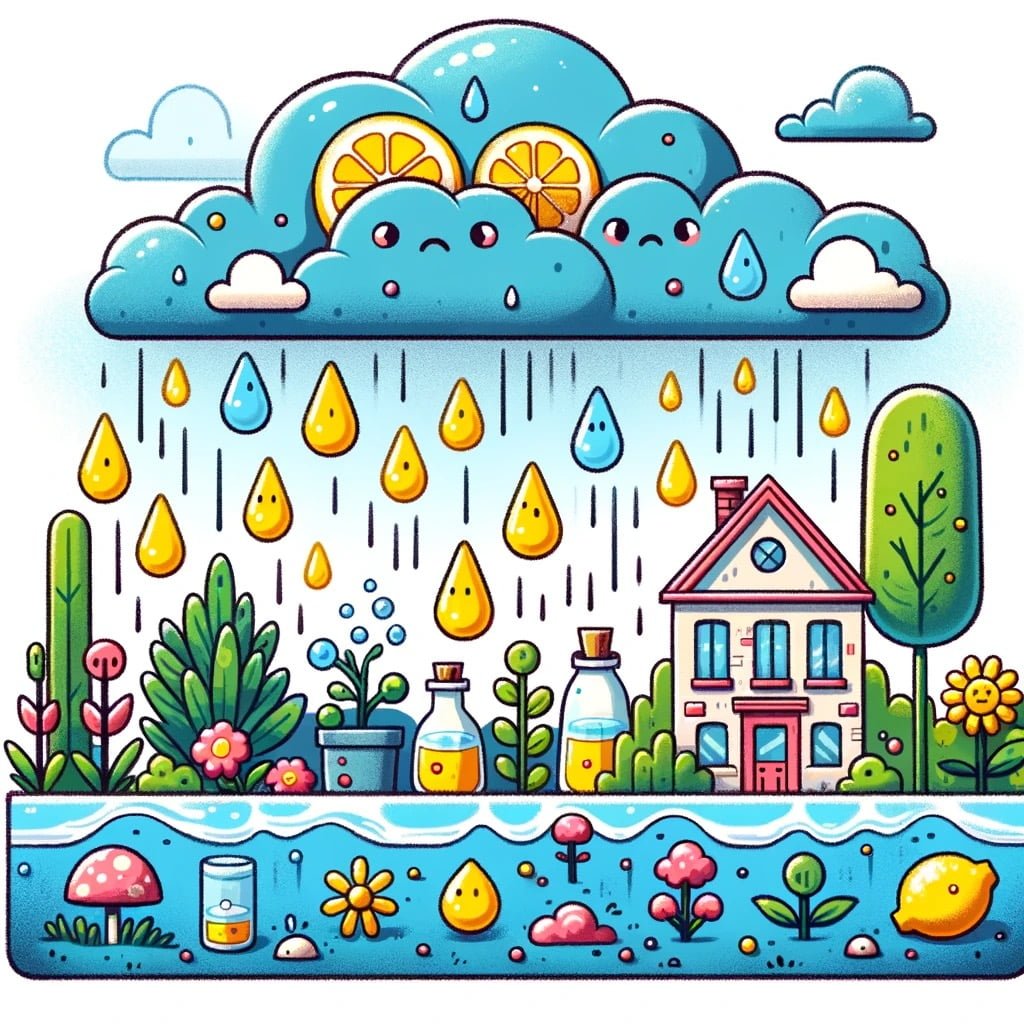
For younger kids: Rain can be like acid and harm trees and animals.
For older kids: Acid rain is caused by pollution and can damage forests, lakes, and rivers, affecting plant and animal life.
Detailed explanation:Acid rain is a form of precipitation that contains high levels of sulfuric and nitric acids. These acids are formed when pollutants such as sulfur dioxide and nitrogen oxides are released into the atmosphere from burning fossil fuels, industrial activities, and transportation. When these acidic compounds mix with water vapor in the atmosphere, they form sulfuric acid and nitric acid, which then fall to the ground as acid rain.
The effects of acid rain on plants and animals can be devastating. For plants, acid rain can leach nutrients from the soil, making it more difficult for them to absorb essential minerals like calcium and magnesium. This can weaken the plants and make them more susceptible to diseases and extreme weather conditions. In addition, the acidic conditions created by acid rain can also damage plant leaves and stifle growth.
Animals, on the other hand, can be directly harmed by acid rain through the acidification of bodies of water. When acid rain flows into rivers, lakes, and streams, it can lower the pH levels of the water, making it toxic for aquatic life like fish and amphibians. This can lead to the decline of these populations and upset the delicate balance of ecosystems.
It is important for kids to learn about these facts about climate, as understanding the impact of human activities on the environment can help them make more informed choices in the future. By educating children about the harmful effects of acid rain on plants and animals, we can empower them to take action to protect our planet for future generations.
Facts About Climate For Kids
8. The Great Barrier Reef is Endangered
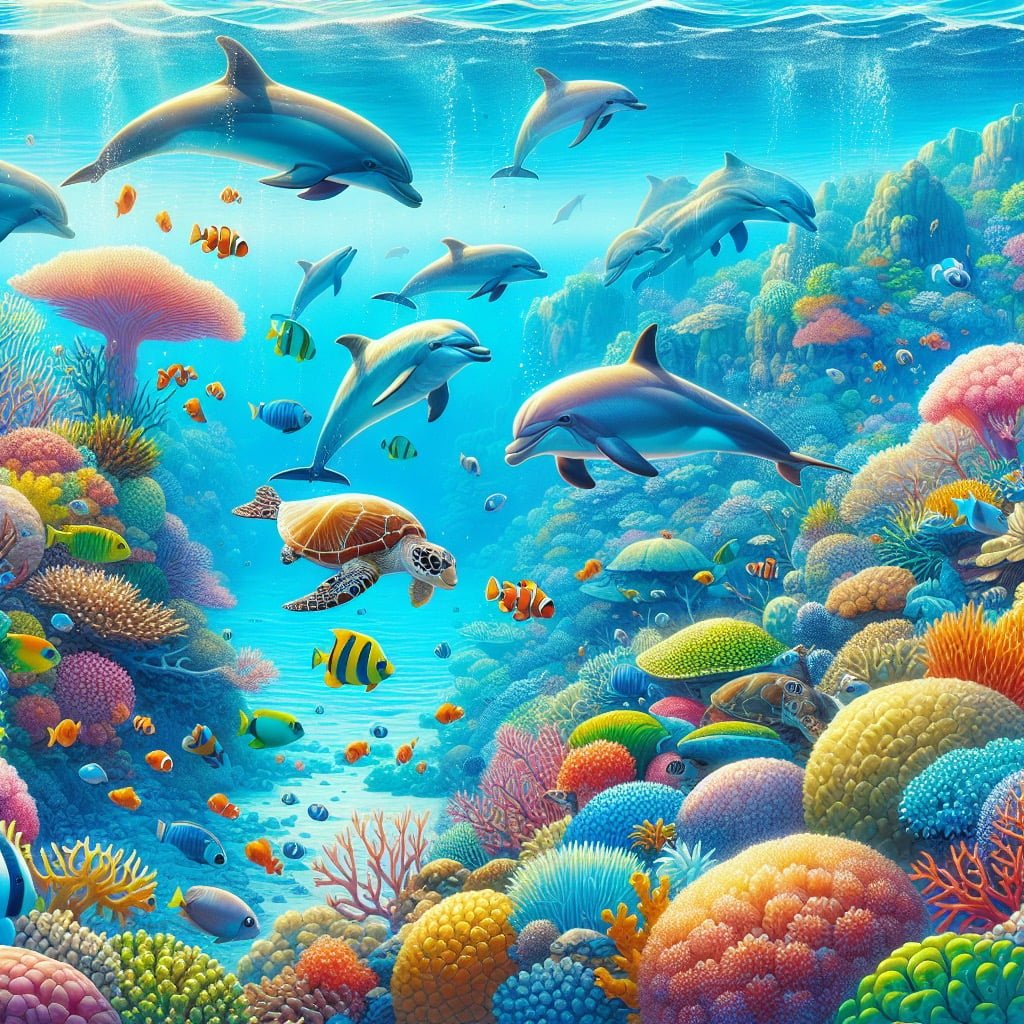
For younger kids: A colorful reef full of animals is in danger of disappearing.
For older kids: The Great Barrier Reef is threatened by ocean warming and pollution, leading to coral bleaching and loss of marine biodiversity.
Detailed explanation:The Great Barrier Reef, located off the coast of Australia, is one of the most biodiverse ecosystems in the world. It is composed of thousands of individual reefs and islands, and is home to a wide variety of marine life, including coral, fish, turtles, and sharks. However, in recent years, the Great Barrier Reef has been facing a serious threat due to climate change.
One of the main reasons why the Great Barrier Reef is endangered is because of rising ocean temperatures. The KEYWORD “Facts About Climate For Kids” show that coral reefs are very sensitive to changes in temperature, and when the water gets too warm, the corals expel the algae living in their tissues, which causes them to turn white, a phenomenon known as coral bleaching. If the temperatures remain high for an extended period of time, the corals can die, which has a devastating impact on the entire ecosystem.
Another threat to the Great Barrier Reef is ocean acidification, which is caused by the absorption of carbon dioxide from the atmosphere. When carbon dioxide dissolves in the ocean, it forms carbonic acid, which lowers the pH of the water. This can make it harder for corals to build their calcium carbonate skeletons, and can also weaken the shells of marine organisms like mollusks and crustaceans.
In order to protect the Great Barrier Reef and other coral reefs around the world, it is important to take action to reduce our carbon footprint and combat climate change. By educating ourselves and others about the KEYWORD “Facts About Climate For Kids” and taking steps to reduce greenhouse gas emissions, we can help ensure that these precious ecosystems continue to thrive for generations to come.
Facts About Climate For Kids
9. Renewable Energy Helps Fight Climate Change
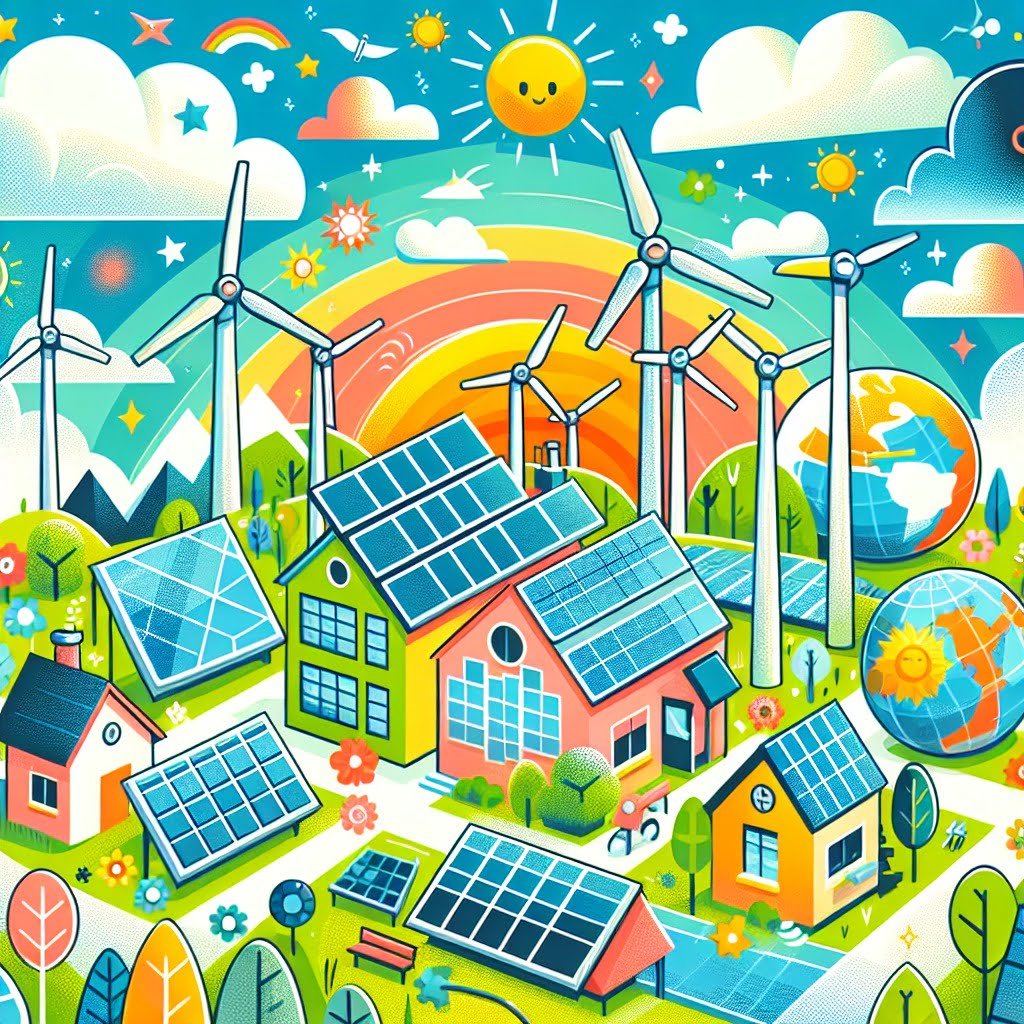
For younger kids: Using wind and sun for energy can help protect the Earth.
For older kids: Renewable energy sources like wind and solar power reduce greenhouse gas emissions and help combat climate change.
Detailed explanation:Renewable energy, such as solar, wind, hydro, and geothermal power, plays a crucial role in combating climate change. Climate change is a significant environmental issue that is largely caused by the burning of fossil fuels, which release harmful greenhouse gases into the atmosphere. These gases, such as carbon dioxide and methane, trap heat and contribute to global warming.
One of the important Facts About Climate For Kids to understand is that renewable energy sources produce much lower levels of greenhouse gas emissions compared to fossil fuels. For example, solar panels harness the energy from the sun without releasing any emissions, while wind turbines generate electricity without producing harmful pollutants. By transitioning to renewable sources of energy, we can significantly reduce our carbon footprint and lessen the impact of climate change.
Moreover, renewable energy is sustainable in the long term, as these sources are naturally replenished and will not run out like finite fossil fuels. This means that we can rely on renewable energy to provide clean power for generations to come. Teaching kids about the importance of renewable energy and its role in fighting climate change can empower them to make environmentally-conscious choices and advocate for sustainable practices.
In conclusion, renewable energy is a key solution in the fight against climate change. By transitioning towards clean sources of power, we can reduce greenhouse gas emissions, mitigate global warming, and create a more sustainable future for the planet and future generations. These are essential Facts About Climate For Kids to grasp and act upon for a healthier and greener world.
Facts About Climate For Kids
10. Everyone Can Take Action to Reduce Carbon Footprint
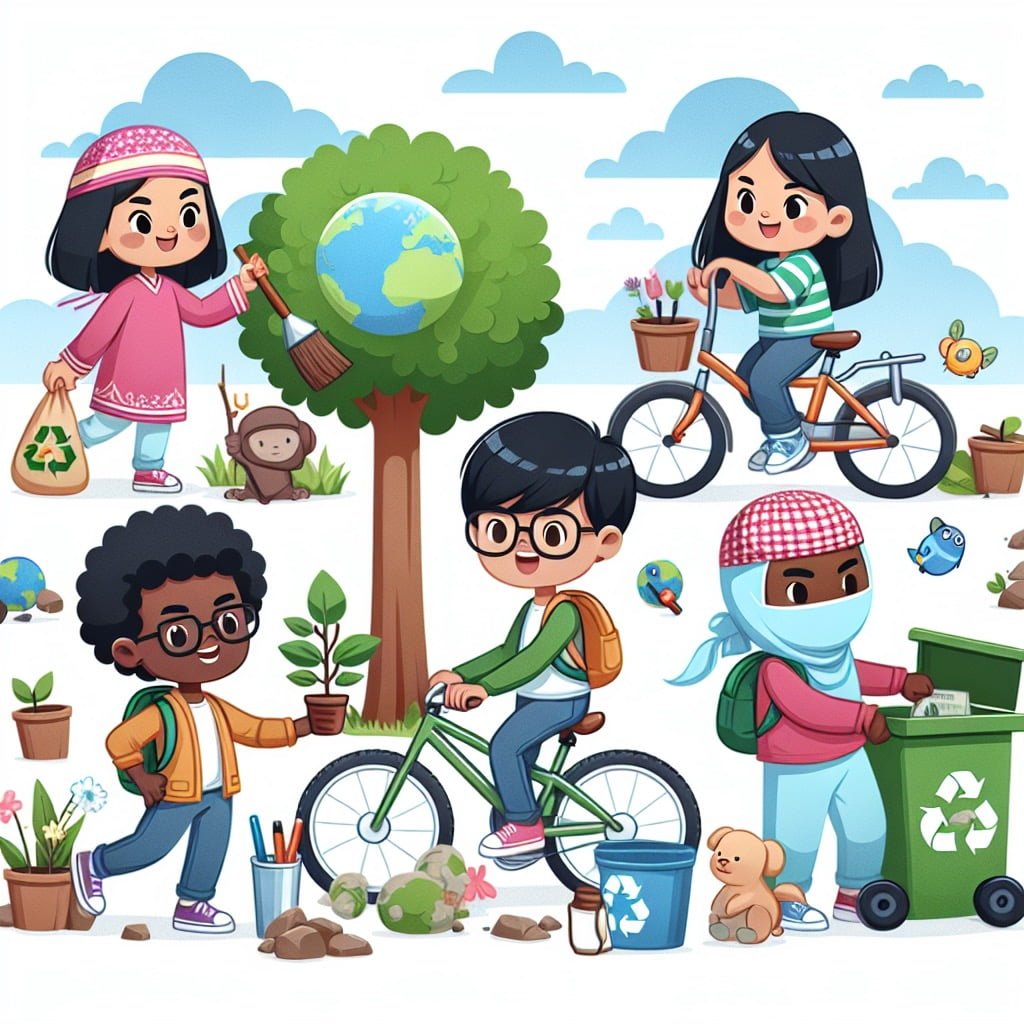
For younger kids: We can all do things to help keep the Earth healthy.
For older kids: Individuals can reduce their carbon footprint by conserving energy, using public transportation, recycling, and supporting environmental initiatives.
Detailed explanation:When it comes to reducing our carbon footprint, it is important to remember that everyone, including kids, can play a significant role in making positive changes for the environment. By understanding some key Facts About Climate For Kids, such as the impact of carbon emissions on the planet and the importance of renewable energy sources, children can actively participate in efforts to reduce their carbon footprint.
One way kids can help reduce their carbon footprint is by making small changes in their daily habits. For example, walking or biking to school instead of being driven in a car can significantly reduce carbon emissions. Encouraging kids to turn off lights when they leave a room, unplug electronics when not in use, and recycle can also make a big difference. Additionally, teaching kids about the benefits of planting trees and supporting renewable energy projects can further empower them to take action.
Education also plays a crucial role in empowering kids to make informed decisions about their impact on the environment. By learning about the importance of reducing greenhouse gas emissions and the benefits of sustainable living, children can become advocates for environmental conservation and make choices that contribute to a healthier planet for future generations.
Overall, by arming kids with knowledge and empowering them to take action, we can help create a more sustainable future for our planet. It is important for everyone, regardless of age, to recognize their role in reducing their carbon footprint and work together to protect the environment for years to come.
Did You Know?
Did you know that planting a tree can help offset the carbon emissions that contribute to climate change? Trees absorb carbon dioxide from the air and provide oxygen in return!
Summary of Facts About Climate For Kids
Climate change is a pressing issue that affects all living beings on our planet. By educating ourselves and deepening our understanding of the environment, we can take meaningful action towards mitigating its impacts. Delving deeper into the intricacies of climate change allows us to grasp the complexities of the phenomenon and its wide-reaching effects on ecosystems, biodiversity, weather patterns, sea levels, and human health. In particular, exploring fun facts about climate change specifically tailored for kids can inspire the next generation to become informed and engaged stewards of our planet. Learning about climate change not only fosters a sense of curiosity and wonder about the natural world but also empowers children to make informed choices in their daily lives that contribute to a more sustainable future for all. Join me on this educational journey to discover the incredible interconnectedness of our planet’s ecosystems and the importance of taking action to protect our precious Earth. Let’s inspire and motivate our young ones to be proactive in safeguarding our environment for generations to come.
Sources and additional information for Facts About Climate For Kids
WikipediaBritannicaEnvironmental Protection Agency (EPA)National Oceanic and Atmospheric Administration (NOAA)The Nature ConservancyWorld Wildlife FundEarth Day NetworkGreenpeace InternationalJane Goodall InstituteEnvironmental Protection Agency (EPA)World Wildlife Fund – ConservationNature ConservancyGreenpeaceUnited Nations Environment Programme (UNEP)Conservation InternationalEarthwatch InstituteEnvironmental Defense FundSierra Club
